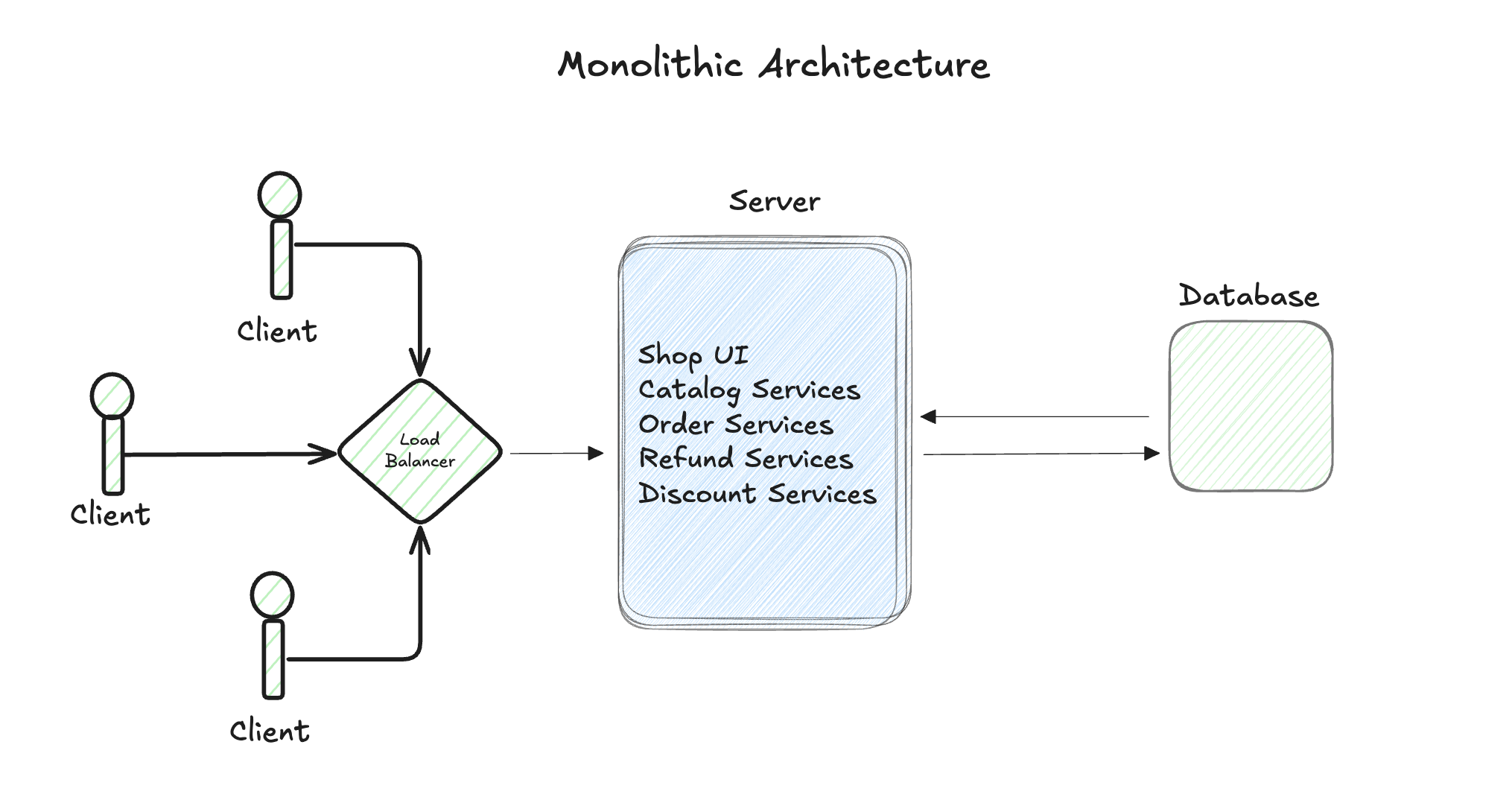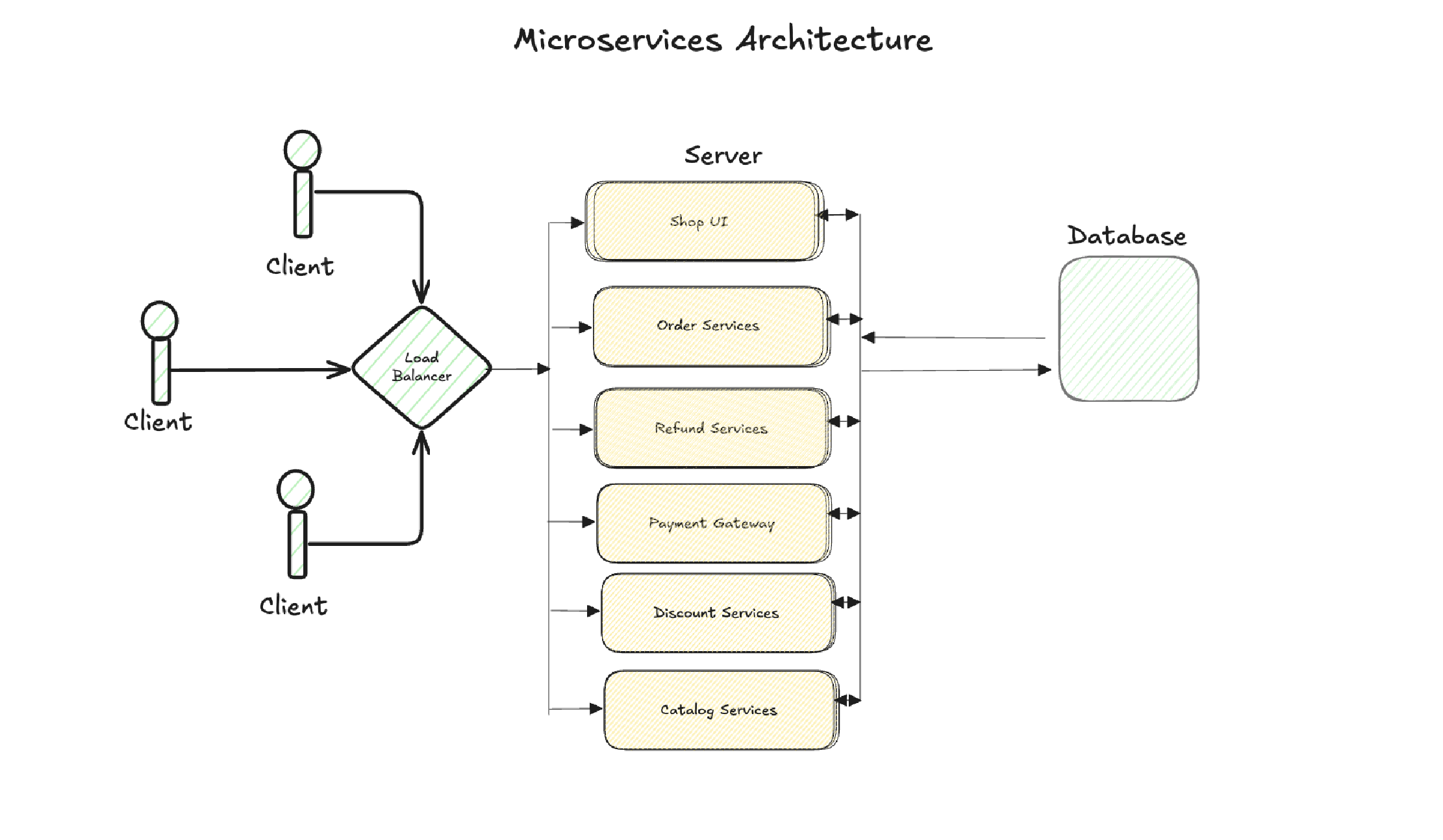Microservices: A Simple Explaination
 Abhi
Abhi
Hi everyone, today i will share my learning about microservices so before sharing about the micro services i want to tell you about monolithic architecture we will taking an example of E-commerce App which include things like payment gateway, order services, Catalog services, refund services and many others.
Monolithic Architecture
It is a type of system or a design pattern in which all the services we are talking about are in a single deployed server and user can interact with the app with the help of shop ui and the load balancer will help to manage the traffic across all multiple instance of your app and in case traffic increases we can add more servers helps in scalability.

So as you can see in the above diagram this is monolithic architecture where there are services that all are deployed in single server and that server is accessing database whenever needed, database can be anything SQL, NoSQL. It is easy to start with but there are some problems i.e.
Slow Deployment Speed
In this architecture the teams has to work together in order to make the app running as a single bug by anytime can affect the whole app as that will lead to deployment issue that will lead to slow development speed
Scalability Issue
if the order services want more resources then whole application must scaled that will lead to scalability issue and high costs
If one services/ system fails whole app comes down that will leads to loss and many things. These are some of the reason why microservices comes into the picture.
Microservices Architecture
What make this architecture different from the above is that the services that we were talking about are hosted as different different small microservices

As you can see there are different microservices that are deployed independently this can be done in my way like using aws lambda, docker, etc... So now what is the benefit of using this architecture
Independent
As these services are deployed independently that means if one fails it will not affect the other like if refund services fail that means user can buy, see the things but cannot refund at that moment but later on the services will get fix.
Fast Development and Easy Communication
As they are not dependent on each other that means the team can focus entirely on the allotted services instead of waiting for other services dependencies compatibility they can easy collaborate using API. Irrespective of any selected tech stack that means Order services can be made on MERN and refund can be made on GO, they can easily communicate using API.
Cost Efficient
This architecture helps in cost effectiveness for eg. your order services wants 3 CPU and refund services wants 2 CPU that can scale independent of each other, result in cost efficient as earlier in monolithic architecture if one wants to scale up everyone have to scale up leads to high cost.
There are also some disadvantage that is poor API management will leads to increased complexity as communication happens through APIs, high number of api calls leads to high response time
Conclusion
Microservices offer scalability, flexibility and cost efficiency making them ideal for large scale applications. However they introduce challenges like API management and increased complexity. For small project starting monolith and later migrating to microservices is better approach. Understanding when to use what is the way of build robust application. What are your thoughts on microservices? Have you worked with them before? Lets discuss in the comments!
If I made any mistakes, feel free to point them out—I’m always learning!
Happy Coding🚀
See you again with another blog like and follow Peace✌️
Subscribe to my newsletter
Read articles from Abhi directly inside your inbox. Subscribe to the newsletter, and don't miss out.
Written by
